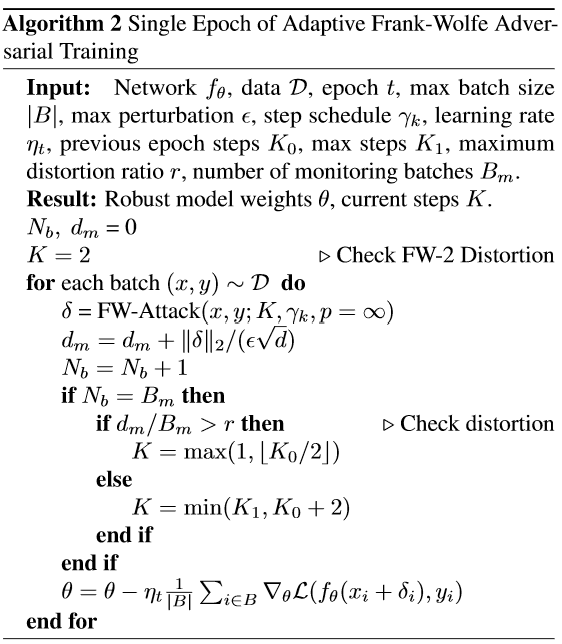Understanding and Increasing Efficiency of Frank-Wolfe Adversarial Training
Deep neural networks are easily fooled by small perturbations known as adversarial attacks. Adversarial Training (AT) is a technique that approximately solves a robust optimization problem to minimize the worst-case loss and is widely regarded as the most effective defense. Due to the high computation time for generating strong adversarial examples in the AT process, single-step approaches have been proposed to reduce training time. However, these methods suffer from catastrophic overfitting where adversarial accuracy drops during training, and although improvements have been proposed, they increase training time and robustness is far from that of multi-step AT. We develop a theoretical framework for adversarial training with FW optimization (FW-AT) that reveals a geometric connection between the loss landscape and the $\ell_2$ distortion of $\ell_\infty$ FW attacks. We analytically show that high distortion of FW attacks is equivalent to small gradient variation along the attack path. It is then experimentally demonstrated on various deep neural network architectures that $\ell_\infty$ attacks against robust models achieve near maximal distortion, while standard networks have lower distortion. It is experimentally shown that catastrophic overfitting is strongly correlated with low distortion of FW attacks. This mathematical transparency differentiates FW from Projected Gradient Descent (PGD) optimization. To demonstrate the utility of our theoretical framework we develop FW-AT-Adapt, a novel adversarial training algorithm which uses a simple distortion measure to adapt the number of attack steps during training to increase efficiency without compromising robustness. FW-AT-Adapt provides training time on par with single-step fast AT methods and closes the gap between fast AT methods and multi-step PGD-AT with minimal loss in adversarial accuracy in white-box and black-box settings.
PDF Abstract CVPR 2022 PDF CVPR 2022 Abstract
